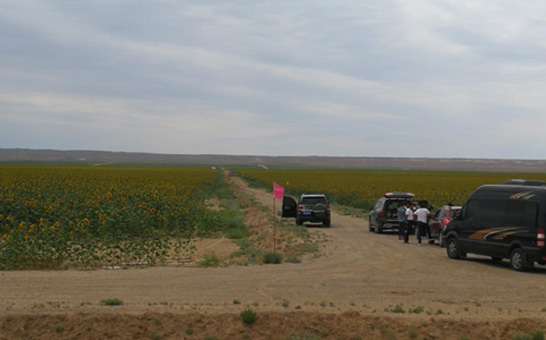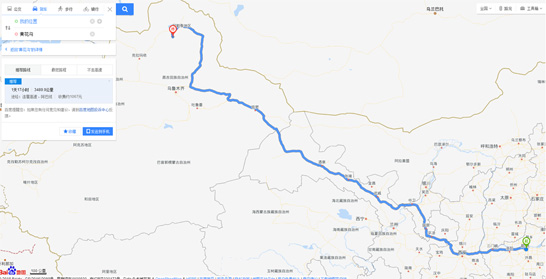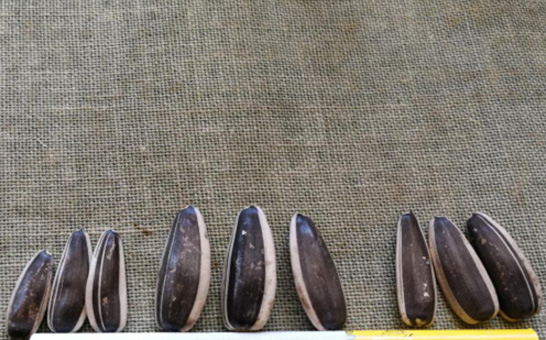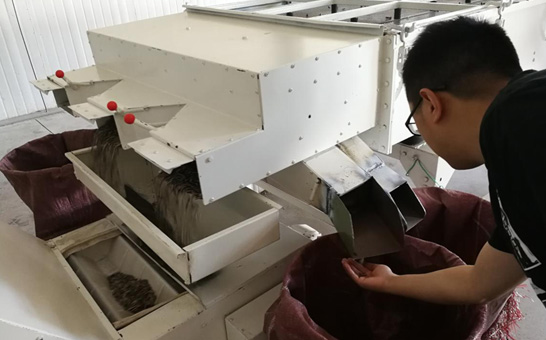09.17
2018under the catalysis of commercial capital, chinese agricultural products are undergoing a new round of commercial fermentation, and high quality means high return. at the china nut health week event launched on september 17, bestore, the well-known snacks service provider, released a new sunflower seeds product called "keke xiang", and the selling price of which is twice as much as that of the roasted snacks store. behind the high premium is bestore's rematch of product design and customer positioning. surprisingly, the planting manager of the "five-star" sunflower seeds is a group of henan farmers who work on the altay gobi desert in xinjiang.


| the annual income of an henan farmer who works on hundreds of thousands mu of gobi desert now reaches nearly rmb 300,000 by planting sunflower seeds
at the end of july, in huanghuagou, fuhai county in altay, xinjiang, the sky is blue and clear and sunflowers blossoming in the sun flood the gobi desert. at the moment, dahe fortune cube, along with bestore, started a source tracing journey of roasted sunflower seeds.
travelling about 3,500 kilometers away from zhengzhou, they arrived in the northern border of xinjiang.
shi songmao, 70 years old, is one of the pioneers of this boundless desert. before 1996, he was the technical backbone of an agricultural technology station in a county of xuchang city, henan province. later, invited by a partner, he has started the dream of "seeking gold in west china" until today.
the communication between the gobi desert and the central-plains civilization in northern xinjiang can date back to 4,500 years ago.
during the shang and zhou dynasties period, wheat, originating in central asia spread eastward from here into the central plains. during the western han dynasty, wheaten food appeared in the central plains. this has laid the cornerstone for henan to become the largest wheat producing region in china, and meanwhile, the braised noodles have become the food label that henan people are proud of.
different from the fertile land in the central plains, to cultivate agricultural products on the gobi desert is an extreme challenge for all mankind on the innovation of agricultural technology.
nowadays, it is hard to imagine the initial state of the gobi desert in those years, and how hard conditions these pioneers were faceing with and how scarce resources were available. as we can see today, through introducing the snow water from the altai mountains and adopting the modern micro-irrigation technology, nutrient cultivation techniques and mechanized farming, they have realized the planting of edible sunflowers on 70,000 mu of fields. what a world-astonished achievement!
"in the barren and harsh soil, and find the right planting method and match the right crops", this is the wealth created by the henan farmer shi songmao and his partners. today's altay is the main producing area of sunflower seeds in xinjiang, with a cultivated area of nearly 800,000 mu. huanghuagou in fuhai county is almost a geographical synonym for "xinjiang sunflower seeds". at the same time, xinjiang sunflower seeds, together with inner mongolia sunflower seeds, shanxi sunflower seeds, jilin sunflower seeds are also called the four major edible sunflower industry belts in china.
shi songmao is the pioneer of the gobi desert and also the most direct beneficiary.
at present, shi songmao and his agricultural cooperative have already been the partner of the contract farming of large edible sunflower producers. he alone is responsible for managing the 12,000-mu sunflower fields, equivalent to the technical adviser of the agricultural cooperative. in the past few years, farmers have achieved good returns by planting high-quality sunflowers. he calculated: 250 kilograms of sunflower seeds per mu, about 14 yuan per kilogram, minus the cost of farming of 1,500 yuan per mu, the net profit of one-mu field is 100%, and the annual net income of an ordinary peasant household exceeds 300,000 yuan.
"in my hometown of henan, the per capita cultivated land is only over 1 mu, while the land on gobi desert of northern xinjiang is vast. as long as you can farm and know the technology, you can plant as much as you want." shi songmao joked. also, he revealed that last year, he let his second son return to the field and subcontracted 2,000 mu of sunflower fields in the cooperative production base.
it turns out that an annual income of hundreds of thousands of rmb through planting sunflower seeds in xinjiang is not a legend but a truth.
| behind the entry of xinjiang sunflower seeds into henan is the trend of high-quality agricultural products matching graded consumption
before the ripening of xinjiang sunflower in july, each plant is nearly two meters high and the sunflower plate is almost as large as a washbasin.
shi songmao said that the local air is dry, crops encounter few pests and diseases, and the sunshine time in summer is up to 17 hours with large temperature difference between day and night, which are naturally suitable for the growth of sunflower seeds. regarding the quality and fineness, the xinjiang sunflower seeds ranks first among the four major sunflower planting belts in china, and even twice as good as the same species in other producing areas in terms of body shape, weight and particle fullness.
however, the sunflower fields cultivated by shi songmao have only recently been connected with the henan consumer market. as he said, most of the previous purchasers were domestic large-scale roasted snacks companies or seed oil retailers (sunflower seed oil), and no retailer from henan purchased here before.
the reason is not complicated. although xinjiang's farmland has obtained relatively low planting costs through large-scale mechanization and standardized production, it is a long way from xinjiang to the mainland, and thus, after amortizing logistics costs, the average price of the raw materials here is higher than that of other producing areas.
"we chinese have eaten sunflower seeds for thousands of years, but only a few people can eat xinjiang sunflower seeds" said chen qi, manager of oem department of hubei xudong food. xudong food is a top-5 enterprise in the domestic roasted snacks industry and is also a supplier of bestore's roasted snacks products - they have been cooperating for seven years.
chen qi said that the raw materials for the roasted snacks market in eastern china are mainly inner mongolia and shanxi sunflower seeds due to their low price. even if some enterprises purchase xinjiang sunflower seeds to the mainland, they usually mix them with other raw materials only to improve the appearance of the products. in the public impression, fried sunflower seeds are on the margin of good taste. the price of raw materials of pure xinjiang sunflower seeds may exceed the ex-factory price of other similar raw materials. "consumers will think that a pack of sunflower seeds at a price of five yuan is normal and acceptable. but what if it's ten yuan?"
however, market may change, and mainstream customer groups and demands change too.
with the growth of new customers of post- 90s and post- 00s, the consumption passion featuring "never compromise", classification of grade and pursuing high quality is becoming increasingly clear. even in the past two years, a jin (=1/2 kilogram) of fried sunflower seeds at a price of one hundred yuan appeared in the industry market.
"the sales big data of online and offline stores shows clearly that high-end roasted snacks are showing an increase in consumption, which has started three years ago.” said huang xinyue, the person in charge of roasted snacks procurement of bestore, for example, the fried sunflower seeds currently sold by the company are about 20 yuan per jin, much higher than those sold on the street. however, they have received positive feedback from the market by virtue of various standards and resource advantages such as raw materials, production, quality and safety, as well as clear transmission of product value to consumers. "henan is a big consumer province of 'eating sunflowers seeds' in china and is also the core support for the sales growth of middle and high-end roasted snacks."
so, how do the xinjiang sunflower seeds planted on the gobi desert connected with the henan market?
the answer is: shi songmao (sunflower village in xinjiang) - xudong food (processing factory) - bestore. up to now, bestore has opened more than 200 stores in henan market.
huang xinyue said henan is a big province of customer resource of bestore, including roasted snacks. when developing new products, bestore will extract and apply henan customers' taste data, which is an essential part.
henan people who are good at intensive cultivation have planted high-quality agricultural products 3000 kilometers away in xinjiang. now, it is necessary for them to return to the hometown joyfully, so that more henan people can enjoy the fruits born by the wisdom and hard work of the central plains.
| how could "five star" sunflowers seeds be different? let me make an explanation
just as meat has different grades, so does sunflower seed. so how is it classified?
in planting stage: seed variety and sunflower plate in growth
the harvested sunflower plates will undergo two rounds of sorting: first, sunflower plates smaller than 40cm in diameter will be deselected for they are considered as "maldevelopment"; second, from the sunflower plates that meet the standard, those with surrounding seeds in best maturity will be selected. later, mature sunflower plates will be sent to the preliminary processing plant in beitun city for sorting.


in screening stage: each sunflower seed will be screened according to its height, weight and color
in august, sunflower fields in altay prefecture of xinjiang will receive collection one after another, and the sorting workshops of various enterprises are extremely busy.
at the production base of "kuizhuang agriculture", located in beitun city, a set of sorting equipment occupying the entire workshop is running cheerfully. sunflower seeds flow like a black river through a conveyor belt, and a tributary is diverged after each checkpoint.

picture: six sets of equipment are used for screening sunflower seed raw materials based on different factors.
zhou aimin, general manager of "kuizhuang agriculture", said that the first screening will remove the abnormal shaped seeds. later, small stones and empty ones will be removed through specific gravity equipment. then, through two x- ray screening, impurities and seeds in incomplete shape will be removed, and those that are uniform and full will be left.
next, there is another screening process for the color of sunflower seeds. in people's impression, the shell of a perfect sunflower seed is with a dark and shiny middle and two pale yellow edges. if the whole sunflower seed is yellow, it will be considered unhealthy. in this process, the x-ray color sorter will screen them out.
the qualified sunflower seeds after screening will be divided into three grades based on particle size. only the grade-1 seeds can become the raw materials of bestore. only about 20% of every 100 kilograms of raw materials meet this standard.
in supply chain stage: grade-1 and grade-2 sunflower seeds are mostly used by roasted snacks retailers, while grade-3 and grade-4 ones are mostly used in cake shops, restaurants or cooking oil factories.
in terms of the quality and grade of sunflower seeds, the following is the most useful way for buyers to compare: from left to right, they are grade 3, grade 1 and grade 2 respectively. among them, the grade-1 sunflower seeds have no extra color. another criterion is "the weight of one thousand sunflower seeds". that is, whether 1000 selected sunflower seeds can reach 220 grams or more.
when consumers buy sunflower seeds, the best selecting way is: draw a straight line, place a few sunflower seeds along the line, and then see if their color, size and weight are even. if they are, it proves that there are no multiple raw materials mixed together.
[tips] throw away "twin" sunflower seeds for they contain harmful elements
so, don't think you are lucky when finding a twin sunflower seed, but throw it away.
zhou aimin told the reporter that the reason why "twin" sunflower seeds contain elements harmful to the human body is that its growth and development is imperfect. such sunflower seeds are usually screened directly by equipment in a standard manufacturing company and then go through harmless treatment. however, some small roasted snacks retailers seeking cheap price will buy unscreened raw materials from farmers.
therefore, twin sunflower seeds are not for eating.
in addition, zhou aimin reminded consumers that many young people are pursuing the post processed flavors, such as sugar, spices and pigments. but in fact, the retailer only dares not mingle other raw materials in the fried sunflower seeds of original taste, while flawed raw materials are more produced to multi-flavored sunflower seeds.
| do you know the mainstream products in the sunflower seeds industry in china?
unexpectedly, a little sunflower seed contains so many similar products and knowledge.
in the exhibition hall of "kuizhuang agriculture", we found these popular products in the domestic sunflower seed industry.